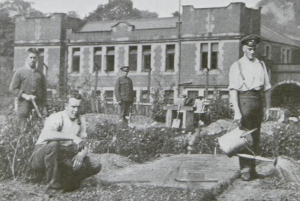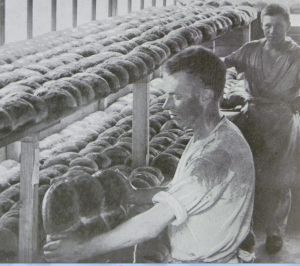IMAGES FROM A BOOK IN OUR COLLECTIONS ENTITLED GERMAN PRISONERS IN GREAT BRITAIN (published circa 1916 by Tillotson & Son Ltd., Printers, Bolton & London)
 The photographs in the volume had been taken ‘in response to a request made by the American Ambassador in Berlin’.
The photographs in the volume had been taken ‘in response to a request made by the American Ambassador in Berlin’.
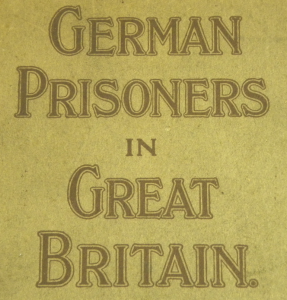
Cover of the work ‘German prisoners in Great Britain’, c.1916. (from book held at Centre for Research Collections, RB.P.1034)
Apparently they were to ‘form part of the Wurtemberg War Exhibition’ (Württembergische Kriegs-Ausstellung), held in Stuttgart, May-September 1916.
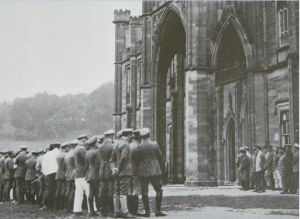
Donington Hall – German officers assembling for roll-call (from book held at Centre for Research Collections, RB.P.1034)
The exhibition had been organised by the Württemberg Red Cross, under the auspices of the king and queen of Württemberg and the Royal Württemberg War Ministry. Württemberg at the time retained considerable autonomy within Germany and had its own royal family, with its capital at Stuttgart.
This fact reflected the complex political structure of Imperial Germany – Württemberg being a kingdom (formerly a duchy) that had become part of the German Empire in 1871.
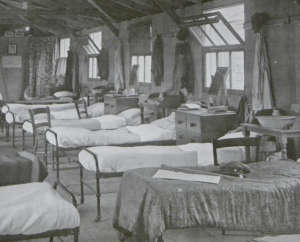
Donington Hall – one of the dormitories (from book held at Centre for Research Collections, RB.P.1034)
The foreword to the book claims that ‘the prisoners were left entirely free to choose whether they would be photographed or not’. The text continues:
The photographers had explicit instructions that no prisoner was to be photographed without his content, and that neither compulsion nor persuasion was to be employed to induce anyone to form part of a group
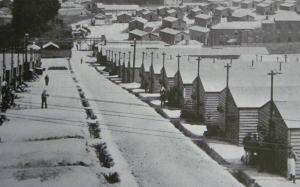
Dorchester Camp – a general view of the site (from book held at Centre for Research Collections, RB.P.1034)
The photographs which appeared in the book illustrate 6 of the largest prisoners’ camps in Great Britain: Donington Hall, Alexandra Palace, Dorchester Handforth, Lofthouse Park, and Eastcote.
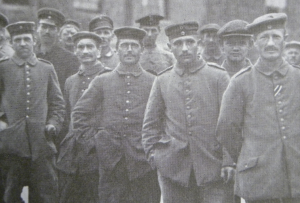
Dorchester Camp – group of prisoners, some of whom have come from the Somme (from book held at Centre for Research Collections, RB.P.1034)
Donington Hall is an 18th century ‘gothic’ house near Derby which had been requisitioned by the War Office of the British government during the Great War for use as a prisoner of war camp.
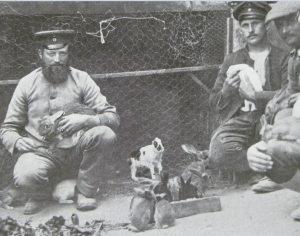
Dorchester Camp – prisoners and their pet rabbits (from book held at Centre for Research Collections, RB.P.1034)
It housed German officers who were waited on and served by their lower military ranks who were billeted in huts in the grounds.
One of Donington Hall’s celebrated in-mates was the German aviator, aerial explorer, and author, Gunther Plüschow (1886-1931) who had explored and filmed Patagonia and Tierra del Fuego from the air.
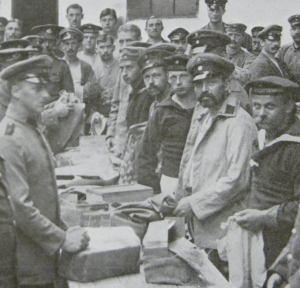
Handforth – parcels arriving from home (from book held at Centre for Research Collections, RB.P.1034)
As an imprisoned German naval pilot (May 1915) Plüschow successfully escaped from Donington Hall during a storm (July 1915) and made for the neutral Netherlands.
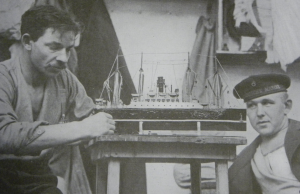
Handforth – model ship built by Kaiserliche Marine prisoners (from book held at Centre for Research Collections, RB.P.1034)
Dorchester Camp, Dorset, received its first prisoners of war in August 1914. The camp was set up at the town’s empty artillery barracks at Poundbury. At its height, the camp housed 4,500 men – equivalent to almost half of the town’s resident population.
A print-works in Handforth, near Wilmslow, Cheshire, became a prison camp for Germans with 1,000 housed their by November 1914, and 2,000 by April 1915.
Eastcote prisoner of war camp was in Northamptonshire, and was also known as Pattishall Camp. It would eventually come to house more than 4500 German prisoners of war.
![]() Dr. Graeme D. Eddie, Assistant Librarian Archives & Manuscripts, Centre for Research Collections
Dr. Graeme D. Eddie, Assistant Librarian Archives & Manuscripts, Centre for Research Collections
 This blog-post was created by using the volume itself, and with information found on BBC pages and those of the Imperial War Museum and the National Army Museum
This blog-post was created by using the volume itself, and with information found on BBC pages and those of the Imperial War Museum and the National Army Museum


